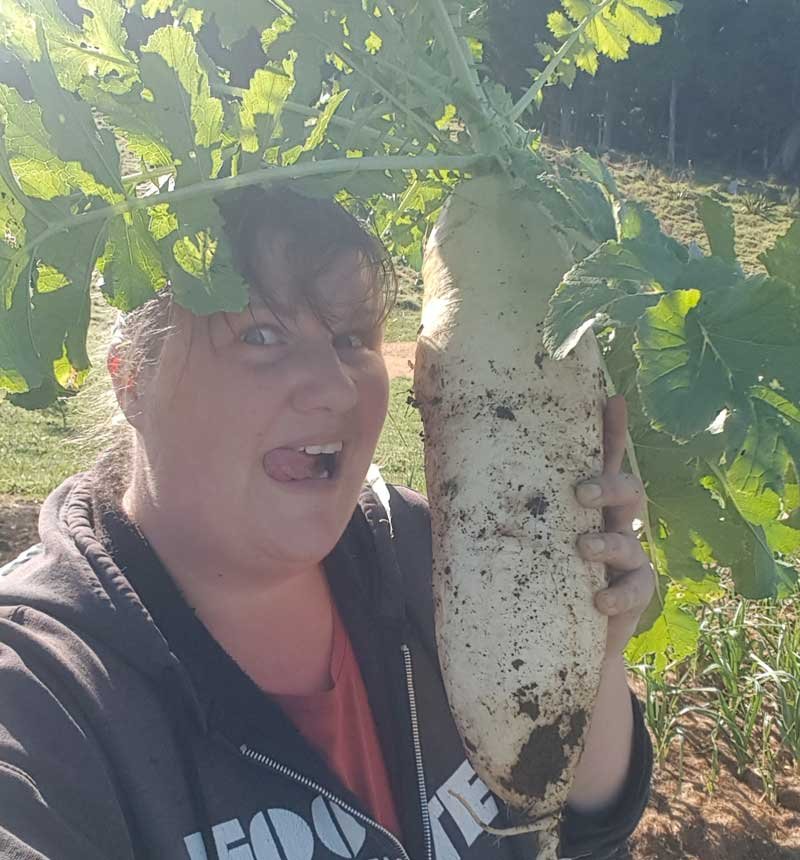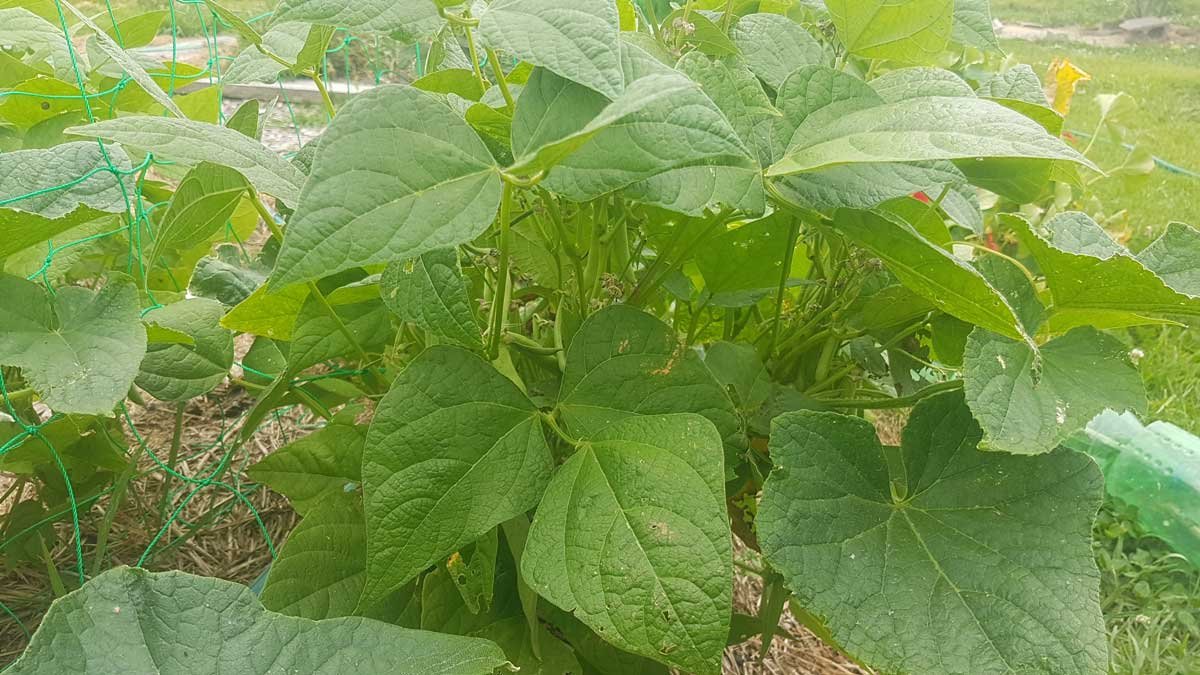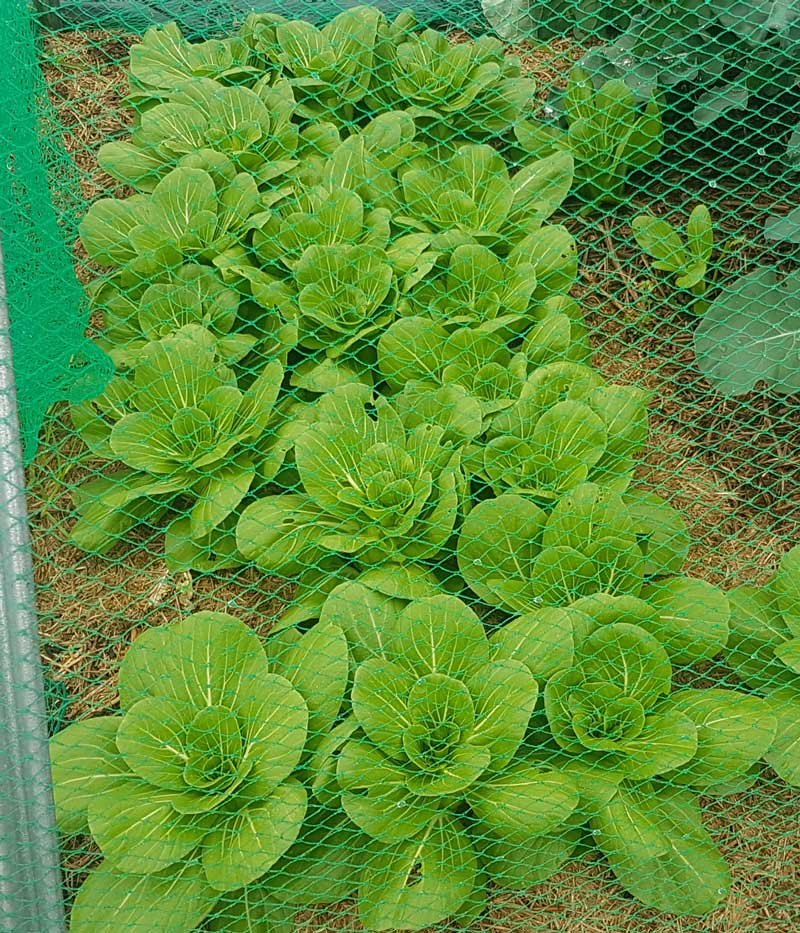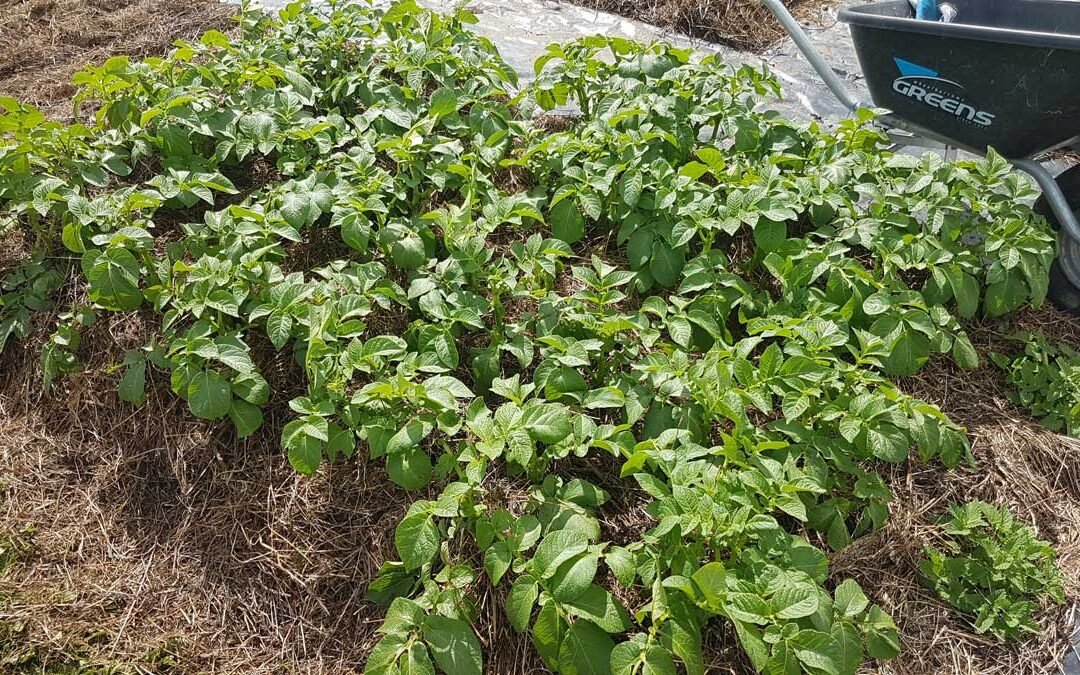I put out a call for blog ideas yesterday, and one response asked which vegetables a newbie gardener can grow without screwing it up. It’s 2020. In a year of a global pandemic and interrupted supply chains, a lot of people have taken up gardening. If you’re one of those people, then welcome to the club!
The truth is, there’s always a bit of a learning curve with any new vegetable. Nothing is entirely ‘set and forget’, but there are certainly some things I’ve found easier or more rewarding to grow.
My first piece of advice to you: grow what you’re going to eat. Especially if you are limited in space or time. A glut of a vegetable you don’t like becomes more of a problem than an achievement.
Over the years, I’ve played with some of the many varieties of vegetable available. I eat things now I didn’t eat when I started gardening because it’s easy to grow. Here are some of my favourites.
Potatoes
There is a technique to growing potatoes, and it’s worth knowing before you begin. You need to know what a chitted potato is, and that layering soil over and around the plant is important. I explain both these things (and a few more) in this blog.
Once you have an understanding of the technique, potatoes are pretty hard to screw up. Your biggest foes will be pests and disease. Avoid disease by purchasing certified seed potatoes (available at garden and hardware stores). Avoid pests by planting your potatoes in a well-draining soil or sterile garden mix. Ensure moist, but not soggy soils as they grow.
If you want a really good crop, fertilise every couple of weeks with seaweed, fishmeal, worm wee, or a specialist tomato or potato fertiliser.
It might sound like a lot of work, but it’s worth knowing that even if your potatoes do get hit by pest or disease, you’re probably still going to get potatoes. Only once has my crop entirely failed – and that’s because we were new to the property and accidentally planted them in a spot prone to collecting water in heavy rains.
After about 3 months, you’ll be able to dig through the soil to find your own fresh, home-grown potatoes. Potatoes are the most enjoyable thing to harvest. And they really are best cooked and eaten straight from the ground.
Radishes

You cannot possibly screw up radishes. It’s possible you might not like to eat radishes, but you can definitely grow them. They are fast, they are cheap, and they are so, so easy.
If you are an absolute beginner, buy a roll of seed tape and follow the instructions. Seed tape spaces them out for you and removes the fiddly work.
If you want to try daikon or something else a bit different, grab a pack of seeds and sow them directly where you want them to grow.
Radishes take about 6-8 weeks to reach maturity, but you can start picking leaves for salads earlier.
Your biggest enemy will be too much water (usually in the form of a large rain) that can cause them to split – you’ll need to eat or preserve those pretty quickly to prevent them spoiling. Other than that, they’re pretty fool-proof.
Silverbeet/Perpetual spinach
Pick these up as seedlings and plonk them in. Generally best grown in Spring and Autumn as they can bolt to seed if the area is too warm.
In summer, they can be grown in a shady corner, and they’ll usually grow into something big and impressive over winter. Harvest the leaves individually as they reach maturity. Once the plant is large enough, you can just cut off everything about 3cm from the soil. They’ll bounce back in a couple of weeks.

Bush/dwarf beans
Do you like Mexican food? Why not grow your own black turtle beans? Or another bush/dwarf bean variety.
Unlike climbing beans, bush beans don’t need anything to grow up. Most don’t grow more than about 50cm above the ground. They can be sown pretty close together, and take about 3-4 months from sowing to harvest. Now is the perfect time to plant them.
Direct sow your beans into the soil. They should be popping up within a week or two.
For the most part, they’ll take care of themselves. You might find they need a bit of protection from slugs and snails when they are young. If you find they aren’t flowering, you may have too much nitrogen, and not enough phosphorus and potassium in the soil. Add a ‘fruit and flower’ fertiliser to sort it out.
If you want to store your beans, wait until the plant dies back and the bean pods dry out before harvesting. Store in a glass jar and rehydrate throughout winter for home-grown refried beans.
Pak and bok choi
Probably best grown as seedlings when you’re starting out, but if you can’t find any, they also grow easily from seed. It’s worth knowing these come in large and ‘mini’ varieties. Large varieties can get very, very large. Mini varieties are perfect for small-space gardeners. One of my favourites is ‘toy choi‘.
Like silverbeet, these ones don’t like hot temperatures and can bolt to seed over summer. I usually plant them in spring and autumn.

There are three main enemies of pak choi: the first is white butterfly caterpillars. I control them with a combination of netting, and using Organic Caterpillar Bio Control. This is a bacteria that you spray on with water. When the caterpillar eats it, its gut explodes.
Next are slugs and snails, but as long as you keep them off while the plants are small, you should get a harvest.
They take 6-8 weeks to reach maturity, and you can harvest individual leaves rather than the entire plant to extend your growing season.
Other things to know
It’s possible sowing seeds sounds a bit intimidating. I promise it’s not. The seed wants to grow, you just have to provide it with what it needs to do that – growing media, light, and moisture. I’ve written some blogs on how to do that – linked in the section below.
If your learning curve is still steep, I’ve also written a blog on a few paths to learn the things ahead of you.
Failure happens to all of us, but it doesn’t mean you failed. You just have a chance to learn something new this season. The wisest of gardeners are the first to say they’re still learning in the garden. But these crops are the ones I generally have the fewest issues with, and the greatest returns from. I hope they prove successful for you as well!
More sowing guides
I've created a few sowing and growing guides like this one for different plants and situations. If this one hasn't answered your question, maybe one of these will:


